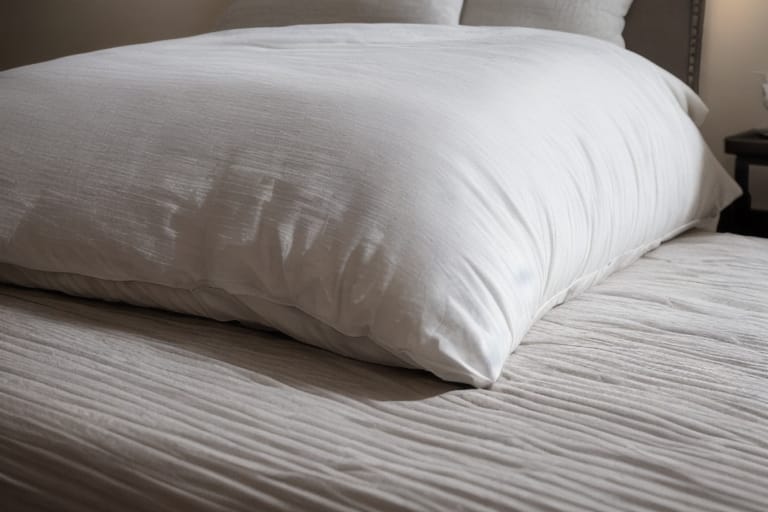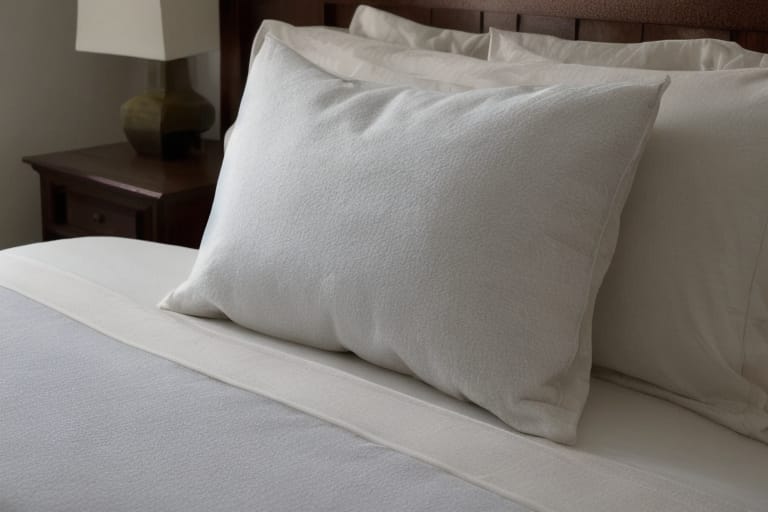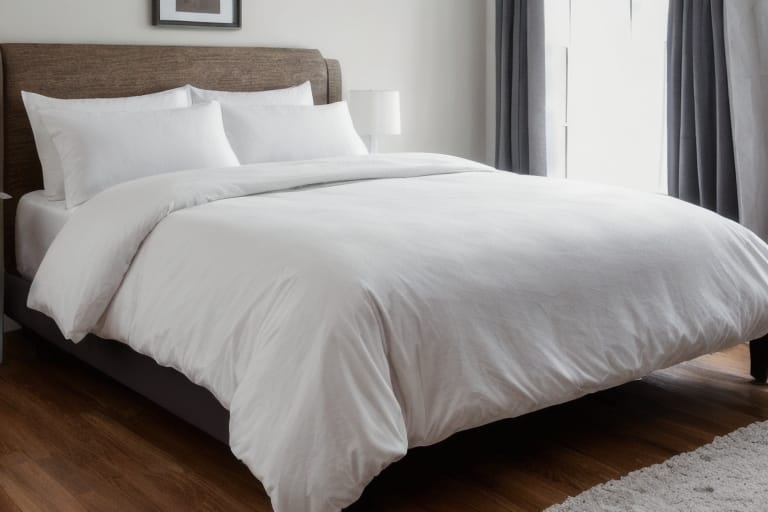When it comes to bedding, down comforters are known for being ultra-warm, fluffy, and comfortable. But with the initial investment into a quality down-filled comforter, you’ll want to make sure you properly care for it so that it lasts. That’s why many people wonder – do down comforters need some kind of cover or duvet for protection?
The short answer is yes. Getting a cover for your down comforter is highly recommended to protect the comforter and help it last longer. But covers also provide other important benefits in terms of easier cleaning, allergen protection, and overall bed appearance.
Benefits of Using a Down Comforter Cover
Below are some of the top reasons why a cover is an essential accessory for your down comforter purchase.
Maintains Cleanliness and Hygiene
- Down comforter covers allow you to remove and wash the cover frequently while keeping the comforter itself clean inside. This saves you from having to launder the entire comforter as often, which can be a difficult process.
- By acting as a protective barrier, the cover prevents body oils, sweat, and other contaminants from embedding directly into the down fill and fabric shell. This maintains better hygiene and increases the comforter’s lifespan.
Guards Against Allergens and Dust Mites
- Down is very receptive to dust mites and other allergens without proper containment. An encasing cover blocks these particles from penetrating the inside fill.
- Special hypoallergenic covers made of tightly-woven fabrics provide even better protection for those with sensitivities.
Retains Fluffiness and Loft
- As a down comforter ages and deflates with use, a cover helps restore fluffiness when you insert a fresh comforter inside.
- Some covers even have internal fluff straps that attach to the corner loops of the comforter to hold it in place inside. This prevents shifting and maintains an even distribution of fill.
Fill Power and Thread Count
When selecting a down comforter cover, two key specifications to pay attention to are:
- *Fill power – This refers to the loft or fluffiness of the down fill inside the comforter, indicating how much space one ounce of the down occupies in cubic inches. Standard fill powers range from 400 to 900.
- Thread count – For down comforter covers, a higher thread count signals a more finely woven fabric, which is more breathable and comfortable against your skin.
| Fill Power | Recommended Thread Count |
|---|---|
| 400-550 | 200+ |
| 600-650 | 300+ |
| 700-900 | 400+ |
As shown in the chart, the higher the fill power of your comforter, the higher you’ll want the thread count of the cover fabric to be. This allows proper air circulation to flow through.

Shopping for the Right Size
An properly-fitting cover is critical for the optimal performance of your down comforter:
- A cover that’s too small can compress the fill and prevent it from fully expanding to provide warmth.
- An oversized cover with extra room may cause the comforter to shift around inside.
When buying a cover, note both the dimensions of your comforter and the size of your bed to find the best fit. Many quality covers today come in standard mattress sizes like twin, full queen, and king, making selection easier. For plush down comforters, you may want to choose a cover a bit larger than your exact comforter dimensions to give the loft space to fully expand inside.
Cover Attachment Styles
Down comforter covers secure closed in a few different ways:
- Envelope or duvet closure – This style has button, zipper, or snap closures along one edge that keep the comforter sealed inside.
- Corner loops/ties – Some covers attach via fabric ties sewn into the corners that tie onto buttons or loops on the comforter.
- Hook and loop tape (Velcro) – Velcro strips that run along the edges keep the comforter firmly in place. This is best for very fluffy comforters.
Duvet covers with full closures tend to be easier to take on and off and allow for more variation in comforter size. But corner ties provide a very taut, smooth surface.
Common Cover Fabrics
Covers come in a wide array of fabrics – below are some top options with key considerations:
- Cotton – Very breathable and helps moisture wick away from your body. Wrinkles easily and needs to be laundered more often than synthetic blends.
- Microfiber – Made from ultra-fine polyester or poly/cotton blends. Affordable option that resists pilling. Avoid if you dislike synthetic fabrics.
- Silk – Extremely soft with temperature regulating properties. More delicate and requires dry cleaning. Most expensive fabric choice.
- Flannel – Provides extra warmth and softness. Can retain body heat so ideal for colder climates. Available in many attractive prints.
For the best year-round performance from your down comforter, a lightweight cotton or cotton/microfiber blend cover offers breathability for summer along with easy care.
Cost Considerations
While covers may seem like just a utilitarian bedding accessory, today’s selections go far beyond basic white duvet covers. Unique colors, patterns, detailing, and designer names can fetch quite high price tags. When cover shopping, consider:
- Plan on spending $75-150 for most standard queen-size duvet covers of decent quality.
- For a very plush down comforter, allocate up to $250 for an oversized cover with premium details to properly fit and protect your investment.
- Or seek out sales – retailers like Bed Bath & Beyond, Pottery Barn, and Wayfair regularly discount covers allowing more budget room for a fabulous down comforter itself.
Expert Tips for Adding Years to Your Down Comforter
To maximize longevity of your down-filled bedding, be sure to:
- Fluff the comforter daily and smooth out any internal clumps of down. Let it air out before making the bed.
- Use a cover and avoid letting body oils directly stain the shell fabric over time.
- Dry clean every 2 years to revive shrinking clusters of down.
- When washing the cover, use a gentle cycle and mild detergent followed by a second rinse cycle if needed.

Frequently Asked Questions
Q: Is it okay to use a comforter without any cover?
A: It’s not recommended. Uncovered down comforters absorb oils and sweat leading to faster breakdown of insulation and discoloration over a few years. They also require professional laundering more often which wears out the shell fabric.
Q: Should I get a 100% cotton cover or a microfiber/polyester blend cover?
A: 100% cotton covers (ideally with a high 300+ thread count) will feel softer and more breathable. But they show stains easier and wrinkle. More affordable microfiber blends resist pilling and shrinking better in the wash. Choose based on your budget, laundry facilities, and preference of natural vs. synthetic bedding.
Q: What’s the benefit of an oversized down comforter cover?
A: An oversized, more generously-fitting cover allows the thick loft of down comforter fill to fully expand and fluff up inside without being restricted. This helps the comforter achieve its maximum warmth potential. Just avoid a cover that’s drastically larger than the comforter dimensions or it may shift around too much inside.
Q: How often should I wash my down comforter cover?
A: Industry standards recommend washing down comforter covers every 2 weeks during warmer months when we tend to sweat more, and once a month in cooler weather. However, always use your best judgement based on personal use. If your cover still looks crisp and smells fresh after 3-4 weeks, it may not need laundering yet.
Q: Can I put a down comforter in the washing machine?
A: No – you should always dry clean down comforters rather than machine wash them. The agitation damages the delicate clusters of down, decreasing warmth over time. Only wash the removable cover regularly according to its fabric care instructions. Every few years bring the comforter itself to a professional cleaner for deeper revitalization.
Q: Does thread count matter for a down comforter cover?
A: Yes, thread count indicates weave tightness. A cover with a higher thread count (300+ for down bedding) has a more finely-woven construction that is softer and more breathable. The tighter weave also keeps microscopic dust mite allergens from penetrating the fabric as easily. Aim for the highest thread count within your budget.








